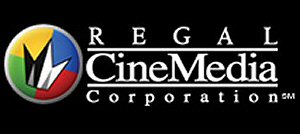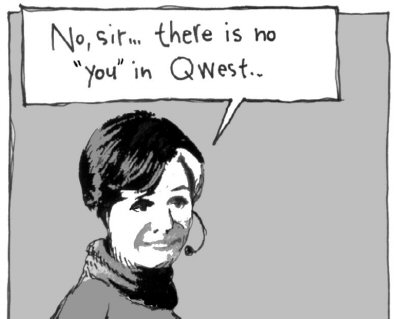Dreams May Come
The shooting and projecting of movies on 35mm film is a dying practice, and it won’t be long before everything is digital this or that…no argument there.
But when will digital projection really be here, and from what digital source or delivery system will movies be obtained and projected — satellite transmission, fibre optic cable, pirate-proof DVDs?
I don’t know how long it will all take, but probably a while. Five years, ten years. Big changes in the way things are done never happen until economic conditions demand them…until the captains of industry feel the flames licking their feet.

But while we’re waiting and trading scnearios, here’s one that’s been passed along that’s more diverting than most. Some of it is fact, the basic thrust of it seems sensible, and the parts that aren’t verified or have been denied seem…well, intriguing. And digging it all up and learning a bit about the world of digital tomorrows was fun.
It involves Regal Entertainment, the 6,273 screen chain composed of Regal Cinemas, United Artists Theatres and Edwards Theatres, and a purported, unverified but logical-sounding plan said to be under consideration by the chain’s owner, reclusive Denver billionaire Phillip Anschutz, to move a significant portion of Regal into a sophisticated digital projection mode.
< ?php include ('/home/hollyw9/public_html/wired'); ?>
The scenario, which has been derided as “conjured,” “colorful,” “nonsense” and having “no basis in fact” by Anschutz’s spokesperson Jim Monaghan, is two-fold — partly about a new middle-American, family-values digital distribution network that may be in the offing, and partly about a nationwide fibre-optic delivery system for films to be shown digital in theatres.
The technical speculation is that movies (in the form of digital feature-film data) could theoretically be sent from a digital switching center (possibly from the St. Louis headquarters of Qwest, the phone company owned by Anschutz) over a vast network of fibre optic cable that’s been laid down by Anschutz alongside the tracks of his Union Pacific railroad company, which he also owns. The films would then be relayed to Regal theatres, booths and projectors and thereby projected.
In so doing, the theory goes, Anschutz would become not just a major digital distributor of movies (through Regal Cinemedia, the division of Regal that attends to the digital potential side) but also, producing-wise, a major market force for G and PG-rated films through Anschutz’s two production companies, Bristol Bay and Walden Media.
Anschutz, in short, would one day be the Big Kahuna of not just a digital-projection empire, but the driver of a kind of ideological market force that, in part, would deliver family-friendly films produced by the Anschutz Film Group, the parent of Bristol Bay and Walden Media.

An indicaton of Anshutz’s game plan lies in the fact that he financed Taylor Hackford’s Ray to the tune of $35 million, but only upon an insistence that Hackford deliver a PG-13 film.
As Associated Press reporter Sandy Shore reported on 2.27, “Anschutz is a devout Presbyterian, but associates say he doesn’t try to influence projects with his beliefs.” Hackford told Shore he and Anschutz “disagreed” about the PG-13 rating, but once Hackford backed off from wanting to possibly deliver an R-rated film, Anschutz “left him alone to make the film.”
“He’s a conservative Republican and he knows I’m a liberal Democrat,” Hackford told the reporter “That didn’t mean we couldn’t talk about business.”
The technical speculation is that Anschutz has a contingency plan to eventually bring cinema-grade digital projection (i.e., with a 2K capacity, in keeping with today’s higher standards, or possibly a 4K capacity) to many of Regal Entertainment’s 6273 screens, which are mainly located in the Midwest and southwest.
Before going into total pooh-pooh mode Friday morning, Monaghan said that the cost of installing cinema-grade digital projection systems is the big question mark facing Regal and other theatre chains. “Nobody has figured out how to pay for it,” he said.
And Lauren Leff, spokesperson for Regal Cinemedia, was careful to point out that
“the Christie L6 projectors Regal currently has installed to operate…do not meet the standards Hollywood is working toward for future projection of full-length digital cinema features.”
There are three ways to deliver digital movies to theatrical movie screens — satellite, fibre optic and specially encoded DVDs.
Nicole Sperling wrote last October in the Hollywood Reporter that Sony Pictures, Warner Bros. and the Walt Disney Co. were in “exploratory talks” to form a joint venture to facilitate the installation of digital cinema systems.
As I understand it, the primary idea is to come up with a way of distributing and projecting cinema-grade digital images (i.e., more or less indistinguishable from top-grade 35mm projection) through specially-encoded or encrypted DVDs.

The major Hollywood distributors formed a consortium two and a half years ago called the Digital Cinema Initiative with a plan to develop digital projection technology and settle on certain operational standards, which would be organized and facilitated by the Society of Motion Picture and Television Engineers (SMPTE).
Leff told me Regal Cinemedia is keeping its eye on what DCI (and/or the three above-named studios) will finally decide upon. And yet Anschutz has an enormous investment in a nationwide fibre-optic cable network, which seems to indicate his possible leanings regarding digital projection plans.
I’m a bit fuzzy here and there (I only have one body, two phones and eight hands), but more than a dozen years ago AT&T approached Anschutz with a proposal to pay a fee for permission to lay down a fiber optic cable along the entire Southern Pacific and Union Pacific right of way — in other words, all over America. Anschutz said no but we will do it for you, for a fee.
Anschutz took ATT’s money, dug the trench and used their money to buy a fiber optic cable three times bigger than AT&T’s (about six inches wide, one guy told me) and put it right down beside the smaller-capacity AT&T cable and covered it up. The cable was eventually utilized by QWest, Anschutz’s phone company.
As Lewis MacAdams put it in his 1998 profile of Anschutz in Los Angeles magazine, “Emulating the way the telegraph came west with the rails, Anschutz used the railroad’s vast right-of-ways — many of them originally granted by the federal government for building the transcontinental systems — to lay an information pipeline: Qwest, the world’s most advanced, high-capacity fiber-optic network.
“When Qwest is fully deployed [at the end of ’99], according to Wired magazine, it will have greater capacity than AT&T, MCI, Sprint and WorldCom combined to almost instantly transmit very large data files or images between 125 American cities, Europe and Mexico,” MacAdams reported.
The idea, I’ve been told (and I realize I’m repeating myself, and that I sound a bit breathless) is to send digital movie data through this fibre optic network from some kind of digital switching center under the auspices of QWest in St. Louis, which would be using a massive Cray computer as its brainiac nerve center.
I agree — the supposed plan sounds around-the-corner and not-yet-real. And if I were Monaghan, and my boss was a secretive, reclusive super-rich tycoon who refuses to deal with the press, as Anschutz does, I might say it’s all bogus too. And some of it might be.
And yet the idea makes sense, and much of what I’ve heard is verified, so I think Monaghan, a nice guy, may be stonewalling a bit.
This morning Monaghan wrote and said “there is no plan in existence…or in thought…the likes of which you have described to us by telephone and by e-mail.”
I replied, “You’re saying Phillip Anschutz has no plan or intention whatsover to eventually introduce a digital projection system within a portion (large or otherwise) of Regal Entertainment’s 6200-plus screens?

“With QWest’s vast investment in a huge fibre optic network and the capacity of this network to handle huge information files…..you can’t be saying Anschutz intends to stay with 35mm film projection in his theatres and has no plans to bring in cinema-grade digital projection for showing movies.”
Monaghan said, “You have asked me to sort out that which is factual from that which is inaccurate in terms of the information you. As the core of your information and beliefs [as convyeyed in your e-mail] is completely untrue and has absolutely no basis in fact, all of the detail supporting that false premise is moot.”
I replied, “You’re saying that the ‘core’ of the information/belief as passed along in my e-mail letter — that Anschutz is developing a system by which digital movie files could be fed to Regal Entertainment cinemas through QWest’s vast fibre-optic network…you’re saying this is complete fantasy and without a factual basis of any kind?
“I’m sorry to be blunt, Jim, but nobody in exhibition or distribution would accept that Anschutz is intending to have 35mm film projection be the technological cornerstone of his projection systems over the next five to ten years and not develop an integrated digital projection system of some kind.
“Every player in the distribution world accepts that digital is coming, is inevitable. It’s all a matter of cost and timing…i.e., when? I’d like to buy what you’re saying, but there is simply no logical way to accept that digital cinema delivery in Regal in the future is some kind of pie-in-the-sky, pot-in-the-pipe concept.
“Given this inevitability, which of the three digital cinema delivery modes, any reasonable person would ask, would Anschutz be investing in?
“The disc mode is said to be close to being finalized and worked out by SMPTE for that consortium of Hollywood distributors, so it’s possible Anschutz could be looking at this as a possibility. Is this the more likely possibility?
“He could also be looking at satellite feeds as the most economical and effective option….is he? (Satellite feeds can be affected by weather, so this is not a very secure option, I’ve heard.)

“It seems like the most logical option for Anschultz, given his huge investment in fibre optic, is to plan for the digital delivery of movies via QWest’s fibre optic network.”
Monaghan concluded, “Having been told by two [public relations reps] associated with both the Anschutz Company and Regal Entertainment that there is no basis in fact for the very colorful story you have somehow conjured, we do not expect to see any of this nonsense on your website or in any other medium.”
To which I replied, “I didn’t maintain that all of the reports and suppositions in my letter were factual, but I know that Anschutz’s investment in his vast fibre optic network is considerable. Elemental logic dictates that he would be loooking at deploying this network as part of a delivery-of-digital-movies strategy.
“I’m not saying I know that Anschutz is, in fact, doing this, but to characterize the basic elements of what I conveyed in yesterday’s e-mail as ‘conjured,’ ‘colorful’ and ‘nonsense’ with ‘no basis in fact’ defies credibility.
If this story came to you on the good authority of someone else,” Monaghan wrote, “and you feel compelled to believe them and not us, then I would expect anything you write to be fully disclaimed. That is, that you would identify the individual or individuals who have provided you this information … as well as our position that the story is completely untrue.
“I understand your position and thank you for conveying it,” I replied, “and I appreciate [the value of] your time and the courtesy that you’ve paid to me. At the same time, I hope you understand how difficult it is for me, and for anyone with a rudimentary understanding of the realities of 21st Century theatrical exhibition or distribution, to accept what you’re telling me as entirely candid.”

Monaghan had the last word when he wrote back this afternoon. “My answer was and is [that] there is no such plan,” he said. “If you find that answer misleading, so be it. To have answered in any affirmative manner would have been misleading.
“For you to twist that answer, however, to suggest that I’m claiming that Anschutz and/or Regal Entertainment ‘intends to stay with 35mm film projection’ is one of the most [amateurish] attempts at bogus journalism that I’ve seen in a long while.
“Of course the industry will change, and I assume that Regal will be competitive in whatever future environment presents itself. That’s not to say, however, that Anschutz or anyone else I know has a plan or is now developing a digital projection system.”
